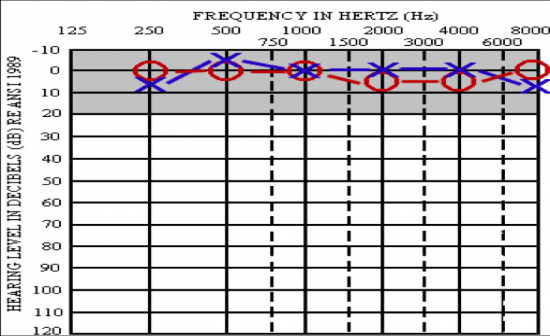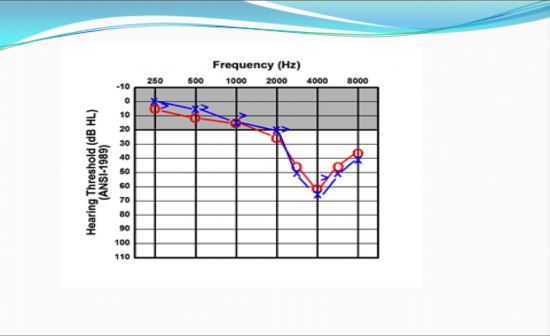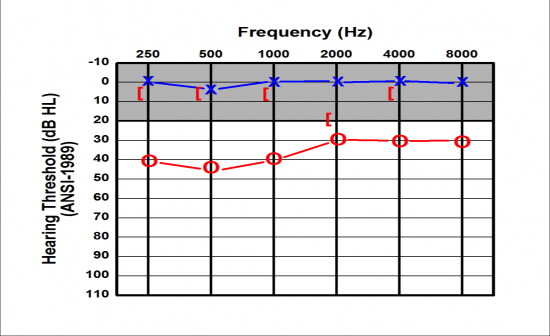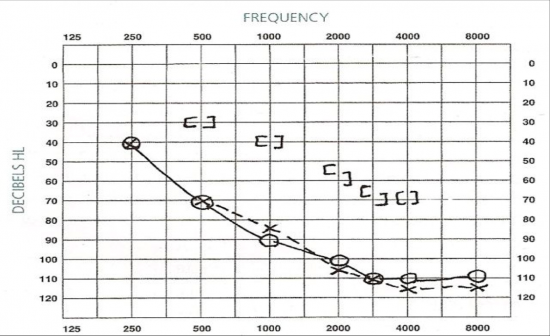Home › Create › Flashcards › Architecture › Building › House › Warehouse › Canteen Stores Department
Cards In This Set
| Front | Back |
|
Threshold
|
the least intensity required for a patient to perceive an auditory stimulus 50% of the time
|
|
The degree of hearing loss
|
the amount of hearing loss a patient has
|
|
Conductive hearing loss
|
Pathology is localized to the outer and/or the middle ear, sound cannot get to cochlea, usually correctable by medical intervention
|
|
Sensorineural hearing loss
|
Pathology is localized to the inner ear or central system, absence of air bone gaps, not usually correctable by medical intervention
|
|
Mixed hearing loss
|
Any conductive hearing loss with an underlying sensorineuralcomponent,
Presence of air bone gaps but bone is no longer in normal range |
|
Reading audiograms... must report these things (4)
|
1. unilateral vs bilateral
2. symmetric vs asymmetric 3. degree of loss 4. type of loss |
|
Unilateral
bilateral |
-issue in 1 ear
-issue in both ears |
|
Symmetric
asymmetric |
- loss of hearing the ame in each ear
- loss of hearing in one ear is >10 dB than the other |
|
Degree of loss
|
Mild, moderate, severe, etc.
|
|
Type of loss
|
Conductive, sensorineural, mixed
|
 This represents what? |
Normal hearing
|
 What does the circle represent? |
High Frequency Sensorineural Hearing loss in Both Ears
|
 What does the circle show? |
Brackets= bone conduction= good
red circles= right ear air conduction= poor =right ear conductive hearing loss |
 What does the circle show? |
Bilateral sensorineural hearing loss, at about 1500 Hz= high frequency because bone conduction= air conduction
|
 What does this show? |
Mixed hearing loss because both bone conduction and air conduction have hearing loss
|



